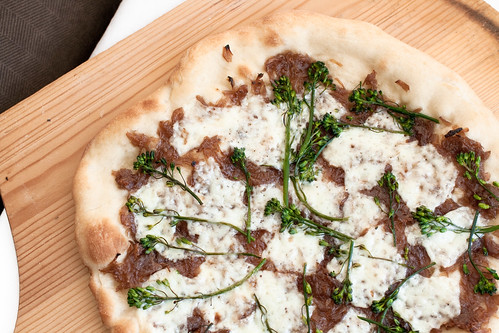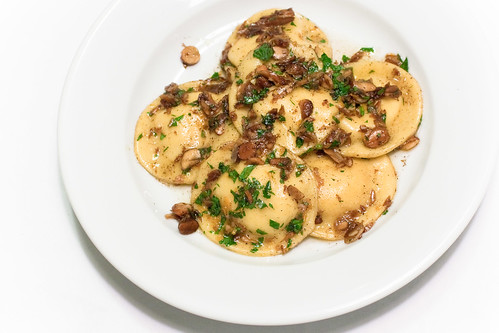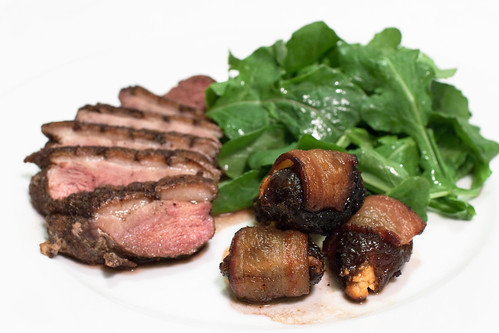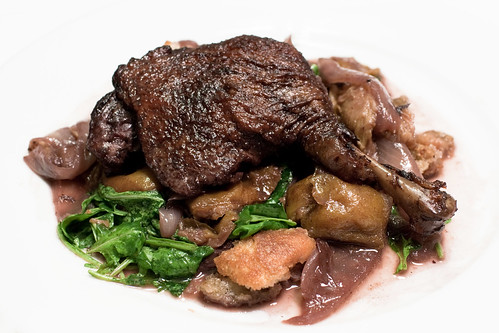On Wednesday I cooked the rest of of the duck from last weekend. In the process I managed to kill two birds with one stone. (Pun intended.) Since we had this mid-week, I wasn't sure if we'd count this as the week four dish or not. It turns out that we made another new dish on Sunday, so I think I'll call it week 3.5, keeping with the duck theme of last week.
I combined two dishes that Emily has been asking me to make. The first is pan-roasted duck breasts with prunes, inspired by the
Contigo dish,
"Seared Duck Breast with tea-steeped prunes, toasted almonds, cardoons, and arugula." And the second dish is the a take on the
bacon bonbons that we order every time we go to
Gitane. We've been talking about making them ever since we first had them a year ago. They stood in for the prunes in the original Contigo dish, and I used the port sauce on both the duck and the bonbons.
The Gitane menu describes the bacon bonbons as
"sautéed prunes stuffed with goat cheese, wrapped in smoked bacon, anise and cinnamon port sauce." A little research turned up a similar a British bar food called
Devils on Horseback and hints of a similar a french appetizer. In the Gitane version, the bacon, prunes, and cheese are a perfect combination and the rich sauce, melding savory and sweet, ties everything together well.
I found the duck breast recipe in
One Spice, Two Spice, a book by an Indian chef who does Indian / western fusion dishes. He uses a star-anise and allspice rub, which I thought would match well with the prunes and sauce. He also adds some ginger, rosemary, and garlic at the end for basting. I served the duck with a simple salad of arugula, goat cheese, and a balsamic vinaigrette (with good balsamic). The goat cheese is not pictured, because I decided to add after we tasted the dish. In the future, I'd also add some almonds to the salad.
For the bacon bonbons, I consulted a few recipes for Devils on Horseback on the web, but I had to guess on the sauce. I decided to use some duck stock and port wine in a 3:1 ratio, reducing the port before adding the stock. I added a little of the spice rub I used for the duck and let the prunes simmer in the sauce as it reduced. I then strained off the sauce. When the prunes cooled, I stuffed them with cheese and wrapped with bacon. I arranged them on a silpat, with the overlapping bacon side down, and stuck it in a 400 degree oven for 20-25 minutes until the bacon was crisp.
Or at least, that was the plan – halfway through the cooking process, the bacon shrunk and most of the bonbons came unwrapped. So I pulled them from the oven, skewered them back together with toothpicks, and stuck them back in to finish cooking.
The one big problem with the meal was that I'd over-salted the duck. The recipe had called for putting the rub on the duck (containing salt) and then salting it again when you put it on the pan. It sounded like a bit too much salt, but did it anyway. Aside from being too salty (which was distracting), the duck was quite good. The spices went well with the duck, and the salad complemented it nicely. The bonbons also went well with everything. I don't think Emily will let me get away with making this dish again without them.
Next up is grilled calamari with chorizo and San Franciscano beans. Also Contigo inspired – someday I should put together a post of all my restaurant-inspired dishes.






